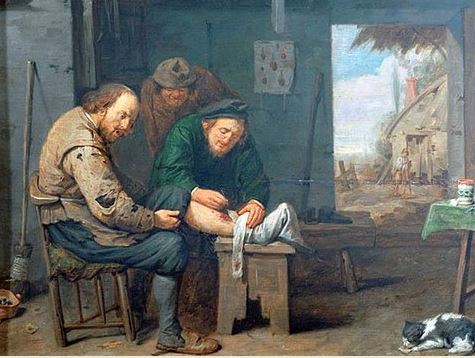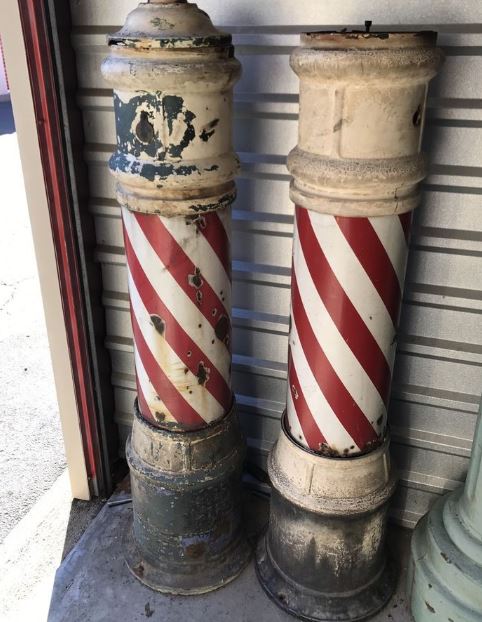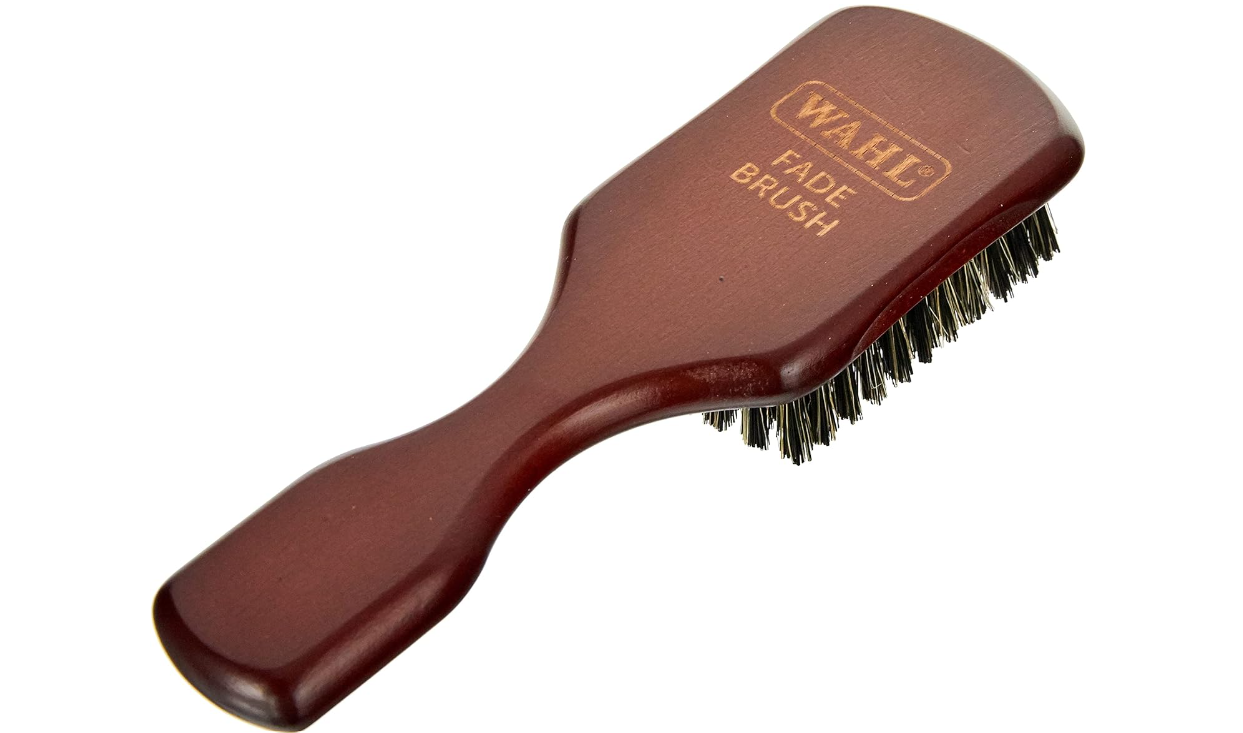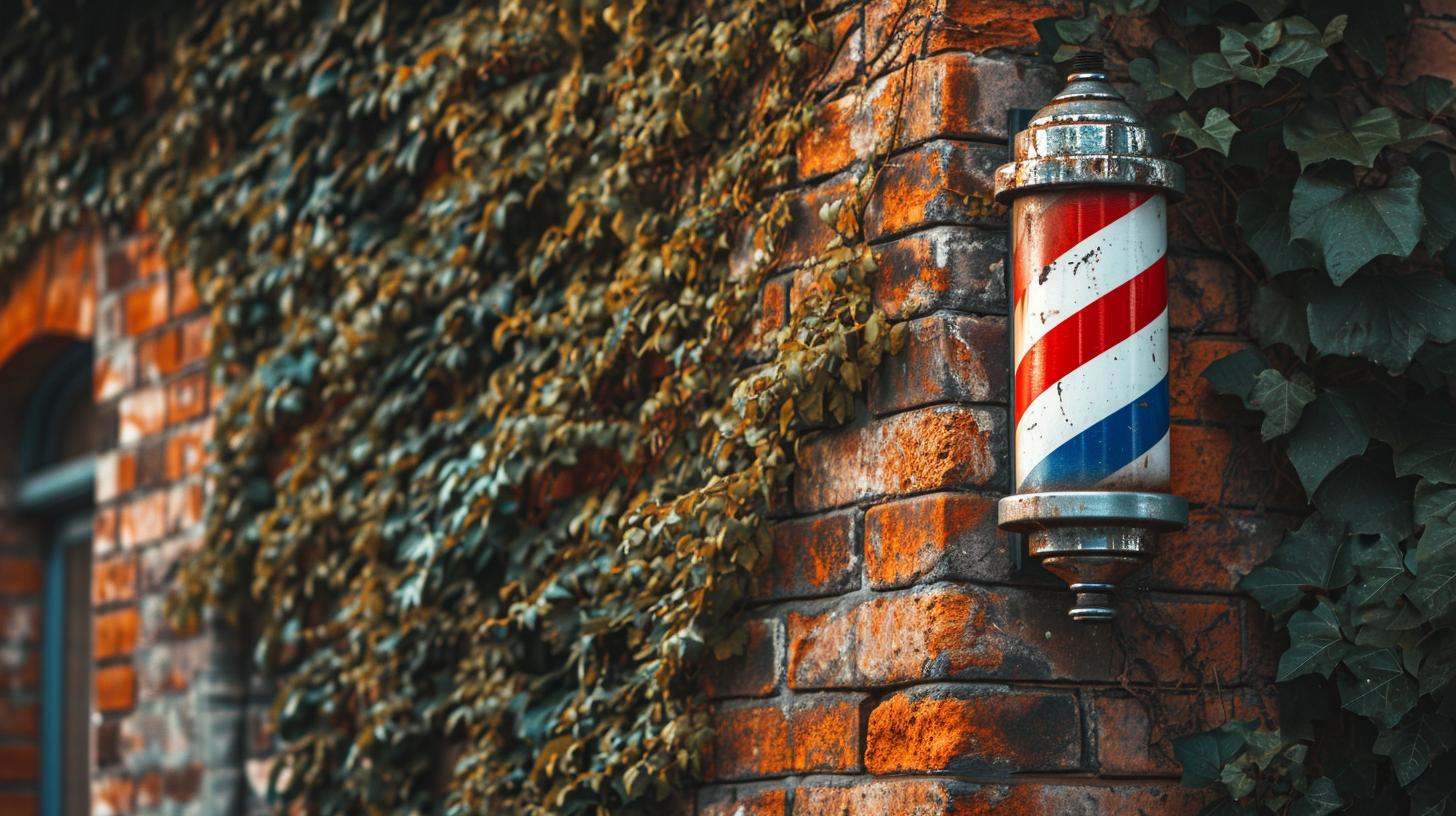
As barbers we are all used to seeing the barber pole spinning and illuminated outside our places of work, but have you ever considered why it’s there? In this History of the Barber Shop feature, we will take you on a journey into the past, to discover the history of the barber pole and a nod to a surprisingly gruesome past.
Table of Contents
What’s the story behind the barber pole?
We are all familiar with a typical working day in a busy barber shop. But in the distant past, things were different, a lot different As we delve deeper into the history of the barber shop, we see that we have been trimming and cutting hair for centuries, but way back in medieval times, we were known as barber-surgeons.
Think you’ve got it tough when you have a difficult client in your chair? These guys not only cut hair, they also performed minor surgery, cancer liaisons, dentistry work such as extractions, even amputations. But, ridiculous as it may sound today, bloodletting was one of the most common tasks carried out in the ye olde barber shops.
When was the barber pole invented?
No one is quite sure exactly ‘when’ the barber pole was invented, but we have a pretty good idea why it was constructed the way it was and what it came to represent.
Medical procedures were expensive for many people in the middle ages, so the barber-surgeon was a cheaper alternative for the very poor. And as barbers were considered craftsmen with their sharp instruments, it stood to reason that they would be the best individuals to carry out some medical procedures.

As time went on, the barber pole came to symbolise a place where you could not only get a trim and tidy up but also have a tooth extracted or some bloodletting done. This being something that physicians of the day thought beneath them, so up stepped the barbers.
The design of the barber pole is very interesting. We will come onto why the colours are present in a moment, but the original barber pole had a brass ball on its top. This represented the actual brass vessel that the leeches were kept in (more on leeches later).
The base of the pole represented the bowl that caught the poor unfortunate patient’s blood. But ‘what about the colours?’ I hear you ask.
Why are barber poles red, white and blue?
Many people in the US or the UK will look at the stripes of the modern barber pole and be struck with some patriotic pride when they see the colours. But as we have seen, this is very far from the truth. So where do the colours originate from?
The medical procedures that were carried out in the barber shops, varied from the mundane, such as picking lice from people’s hair, as well as all the usual barbering services that we associate with today, to the more ‘advanced’ stuff, such as teeth pulling and bloodletting. And it is the latter that truly epitomises the barber pole.
The pole was held tightly by the patient/client to allow the barber-surgeon to locate the vein. The red and white came to represent the bandages that were used to stem the blood flow from the patient after the letting or extraction of the tooth was finished.
Legend has it that these bandages were then washed and hung out to dry on a rod outside the shop. Here they would blow about in the breeze and as some of them which were still blood-stained, would become entangled with the cleaner bandages, forming the striped appearance we are all familiar with today.
After the establishment of the Barber Surgeons Company in around 1540, a law was passed that required barbers and surgeons to distinguish their services by the colour of their poles. Shortly after this barbers used blue and white poles, while surgeons opted for red and white.
Today, many barber shops display a combination of the three colours in a nod to its gruesome historical past
So what exactly was bloodletting?
Thought to originate in Ancient Egypt it is one of the oldest medical practices known to man. Bloodletting consisted of the removal of blood from a patient which was thought to cure illness and disease.
his was carried out by opening a vein and letting the blood run, or for the weaker individuals by the placing of leeches upon the skin. These would then suck the blood from the patient and once full would drop off.

Thankfully as medical procedures improved, this barbaric course of action died out, although, frighteningly there are reports of it still being used for heart conditions as late as the 1920’s.
Why did barbers stop doing surgery?
After the establishment of the Barber-Surgeons Company, the divisions between the two professions became apparent. And in 1743 in France and two years later in England, barber-surgeons who cut hair or shaved were not allowed to perform surgery anymore.
And in 1800 the College of Surgery was founded in England, finally putting a stop to the whole unsavory practice. The last practicing barber-surgeon in England died in 1821.

Why you be careful in South Korean barber shops.
As we’ve pointed out the barber pole has become a symbol for barber shops the world over. But in South Korea, the barber pole is not only used for the barber shop but also for a brothel.
Brothels are sometimes disguised as barber shops. These establishments tend to have two poles spinning in opposite directions, but not always. You can always play safe and only go into hair salons.
And finally….
So there you have it, a little glimpse into the history of the barber shop and the barber poles gruesome past. Although most people who look at a spinning barber pole today think it has some patriotic symbolism, we now know different.




